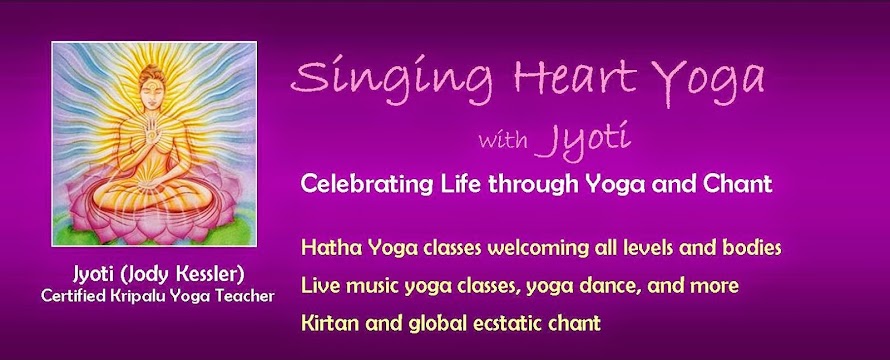Henry David Thoreau said, “We are constantly invited to be who we are.”
I think that’s a beautiful description of Kripalu yoga, which is an inquiry into who we are, through movement, breath, and awareness. When we practice on the mat, we are engaged in a process of discovery as to who we are in this moment, and then the next, and the next. The same applies to our practice off the mat, as we work to live ethically, mindfully, heartfully.
The yogic view sees the self as being many-layered, having a physical body, a subtle or energy body (which includes the thoughts, emotions, intuitive wisdom, and the circulation of life force) and a causal body (expansive and blissful). In this exploration of our many-layered selves (see my post on the 5 koshas for a more in-depth discussion), we have the opportunity to live our lives from a more authentic place.
One of my teachers at Kripalu, Dinabandhu Sarley, says that when what we think, what we feel, what we say, and what we do are all in alignment, something transformational happens—it’s called authenticity. Just as we practice physical alignment on the mat to allow prana (life energy) to flow freely through us, practicing alignment in all aspects of our lives allows us to be a clear, open conduit for prana to flow through us and into the world through our actions. Our ability to be powerful in our lives is contingent upon our ability to bring those four areas into alignment.
When any one or more of those areas—thought, feeling, speech, action-- are out of sync with the rest, the conduit becomes blocked—it’s like a garden hose that gets kinked in 4 places. We can’t be truly at peace or fully alive if we are lying to ourselves, not being truthful with others, or otherwise “in the closet” about who we truly are. Our life force becomes impeded and depleted.
Ultimately, a yogi’s life becomes focused on the question: “How do I become free, whole and alive?” Yoga gives us tools with which we can practice living in alignment, such as the yamas and niyamas, which offer ethical guidelines for our interpersonal relationships and personal commitments. In short, they call us to speak the truth, honor one another, and live with intention and direction.
Practicing authenticity takes courage, as well as much unlearning of unskillful ways of being that may have become deeply ingrained. Being authentic does not guarantee that we will be liked. In fact, we are likely to ruffle some feathers and perhaps alienate some people who are not ready to receive the rigorous honesty that it entails. When we tell the truth, in the deepest sense, things begin to re-arrange in our world. Things, people, and activities that don’t serve us clear out of the way, making room in our lives for What Really Matters.
Ultimately, authenticity is about living from Love. As yogis, may we support one another in this discovery of the truth of who we are.
Everything will line up perfectly when knowing and living the truth becomes more important than looking good. ~Alan Cohen
Seek out that particular mental attribute which makes you feel most deeply and vitally alive, along with which comes the inner voice which says, ‘This is the real me,’ and when you have found that attitude, follow it. ~William James




